The Acute Illness module at Health Center’s is able to collect more information than at the CHW level as there are more tools at the Nurse’s disposal at the Health Center.
There are four main activities in the Acute Illness module: Symptom Review, Exposure/Travel History, Prior Treatment History, and Physical Exam.
Symptom Review allows a Nurse to do an inventory of General, Respiratory, and Gastrointestinal symptoms to inform their diagnosis.
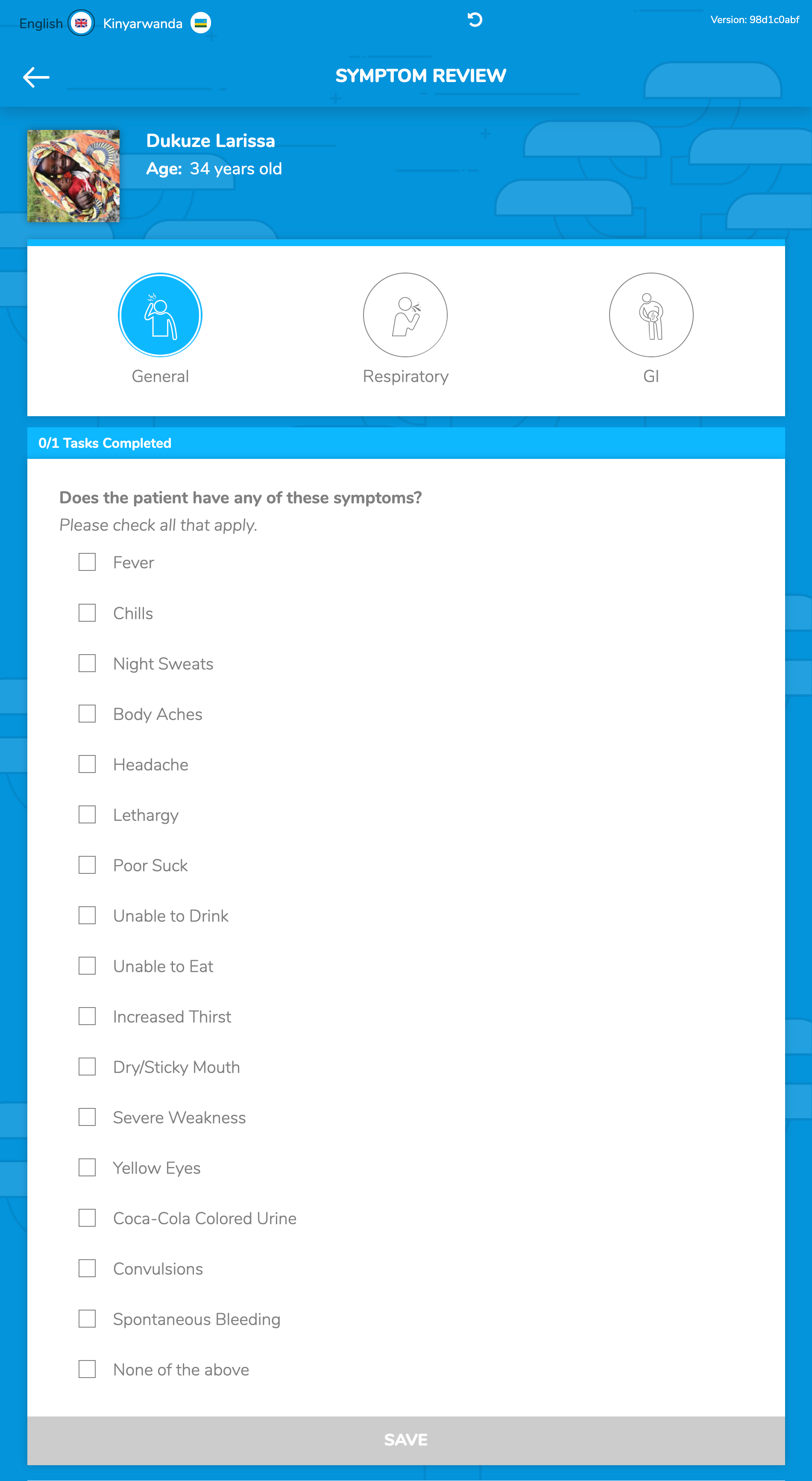
Exposure/Travel History allows E-Heza to streamline a diagnosis for a potential COVID-19 patient. If a patient has been in an area that is known to be high-risk, E-Heza then follows COVID protocol.
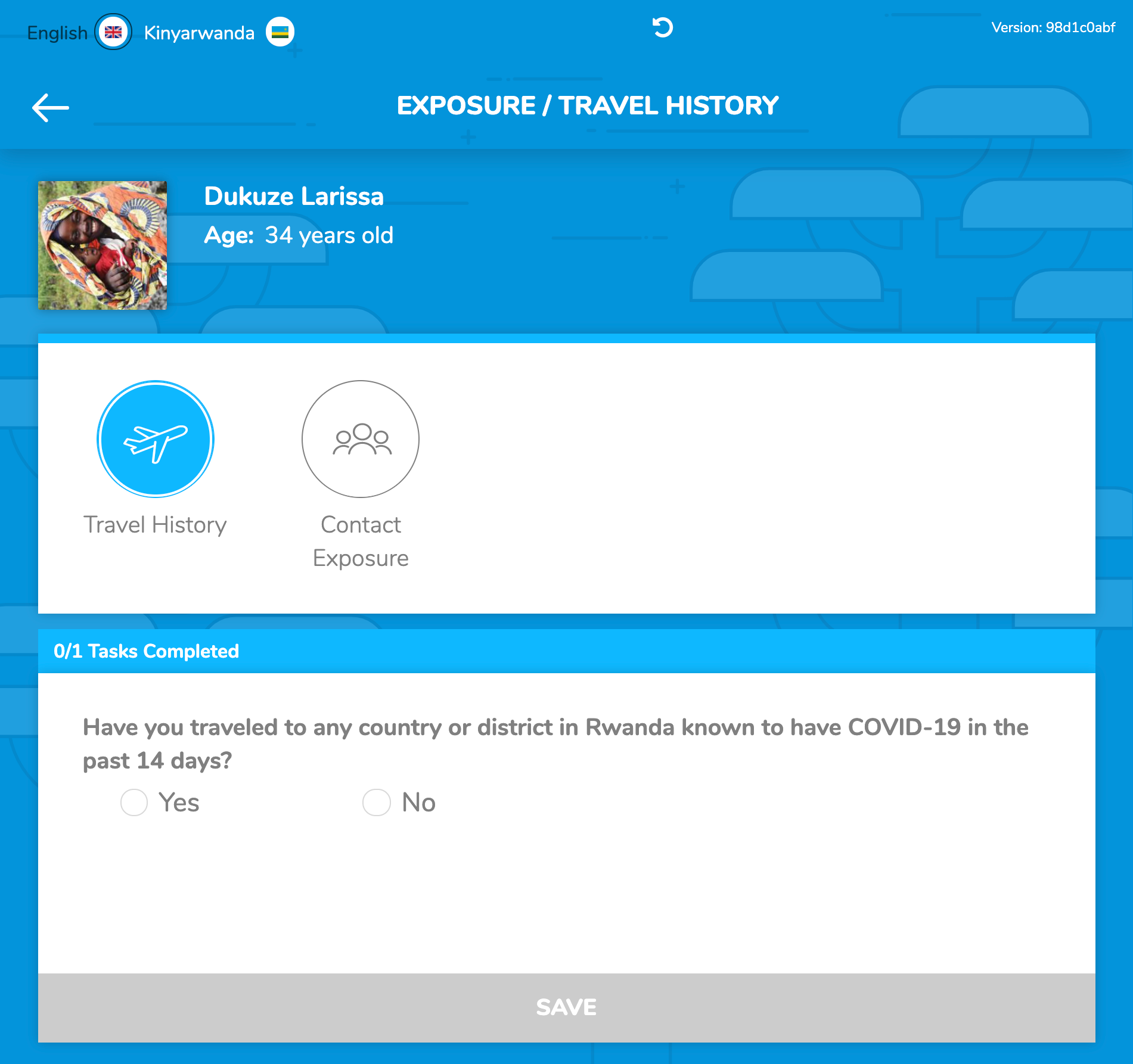
Prior Treatment History determines whether a patient is currently taking treatment for fever or Malaria - and if this treatment is helping. This further informs a diagnosis later in the flow.
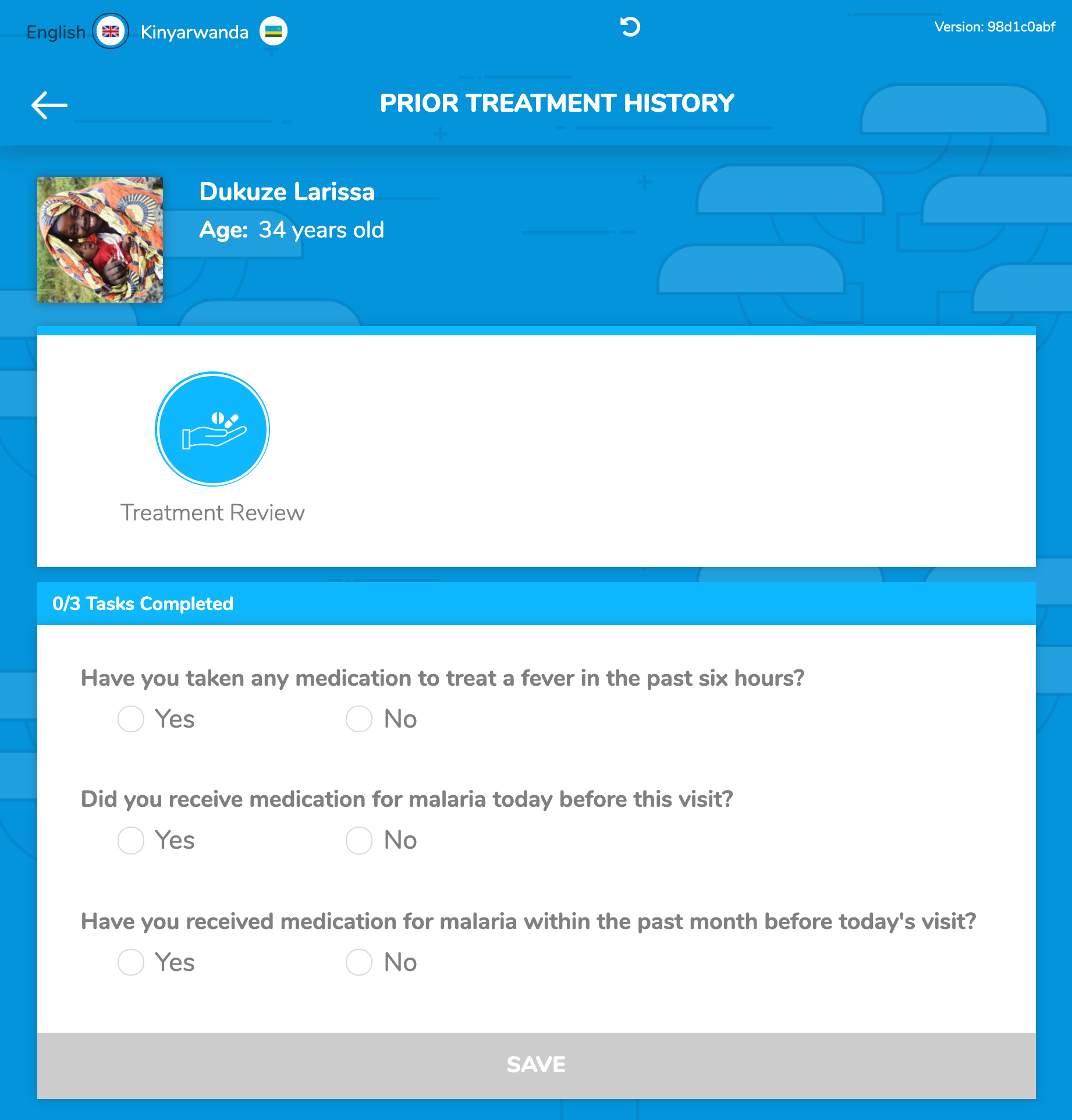
Physical Exam collects information on vitals (e.g. blood pressure and heart rate), core exam (e.g. heart and lung symptoms), MUAC, signs of a nutritional deficiency, and any acute findings (e.g. jaundice or stridor)
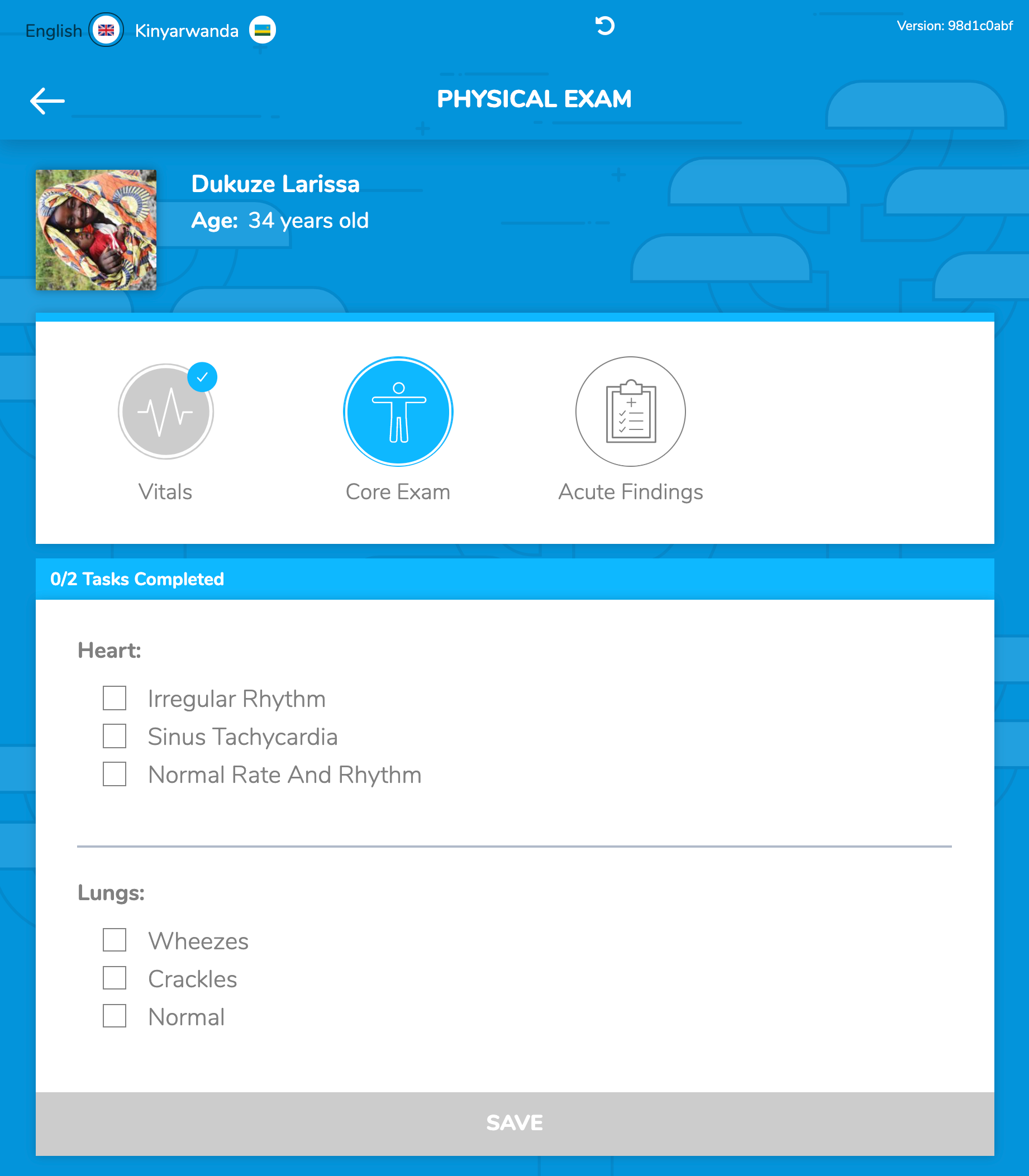
After an initial diagnosis is made, it can be confirmed with laboratory testing (e.g. rapid malaria or COVID-19 test.).
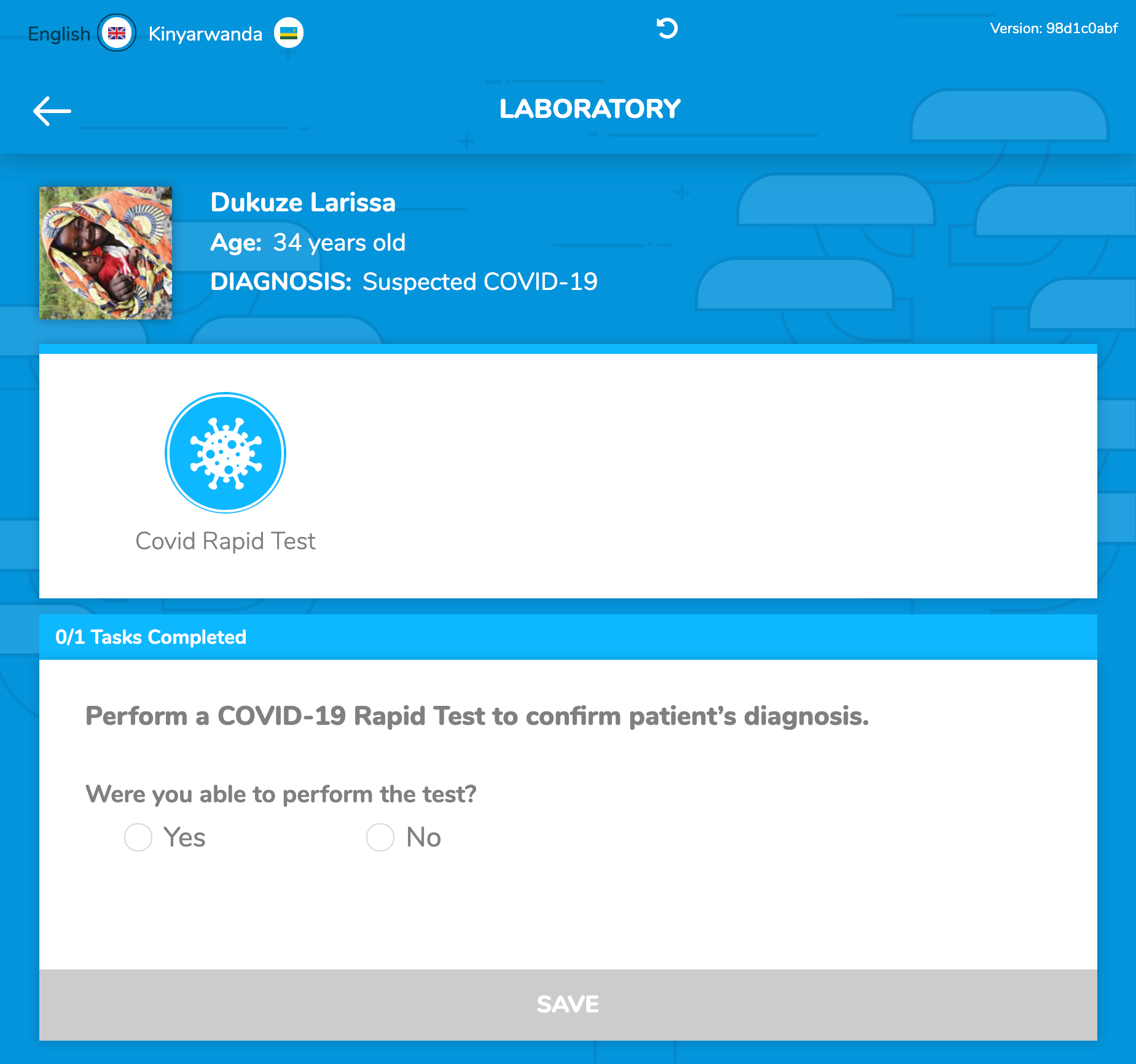
The next steps are outlined depending on the diagnosis and severity of the illness. The next steps will outline medication to distribute, general health education, and allow a Nurse to schedule follow-ups with a CHW.
Contact tracing is currently used for COVID-19 and can easily be used for other instances that require it.
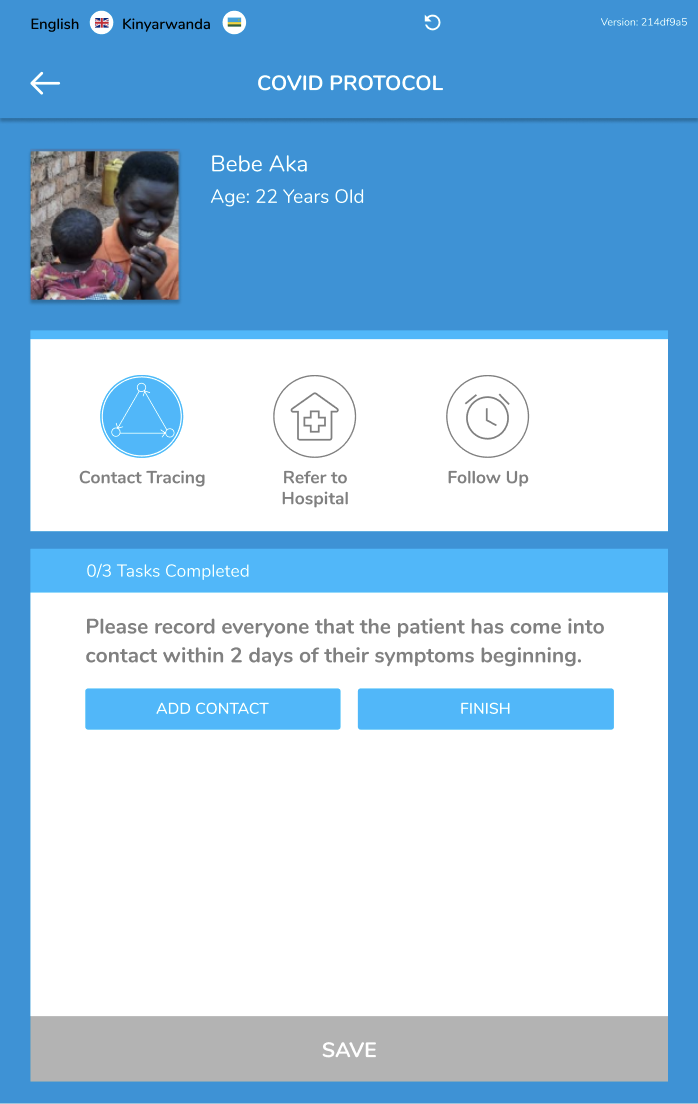
Last Modified: 1 January 0001
